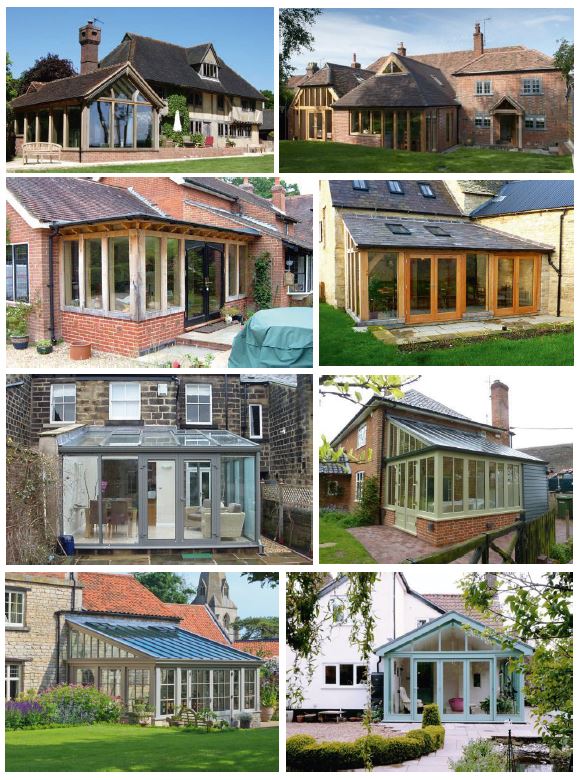The siting and design of this popular form of extension can have a marked effect upon the character of a property. Such designs should be carefully considered particularly if the conservatory is of a standardised or prefabricated type. Simple lean-to forms are usually most appropriate whilst very shallow pitched roofs are best avoided. Siting is normally on rear elevations whilst the preferred construction is a painted timber and glass superstructure on a brick base.
Conservatories seem to offer inexpensive bright and airy accommodation. However, solar heat gains are more than offset by the high rate of heat loss through glazing, especially if the conservatory does not have a southerly orientation. Although they provide comfortable accommodation during spring and autumn, and on a few sunny days in winter, at other times conservatories will either be too hot or too cold.
Comfortable periods can be extended by using shading, blinds and ventilation, but conservatories which are heated increase energy demands and thus carbon dioxide emissions. For these reasons, adding a conservatory should be approached with great care.
A 'sun' or 'garden' room with partly-glazed walls and an opaque, well-insulated roof (perhaps incorporating rooflights) will often provide similar but more usable accommodation than a conservatory. Such additions, particularly if they have tiled roofs, will also tend to achieve more sympathetic results visually.
Please note, there are conditions to be met for conservatories to be exempt from Building Regulations, and limitations on glazed areas for garden room extensions. Contact the Building Control Team at NNDC for further guidance’


Contemporary and traditional forms of garden rooms and conservatories